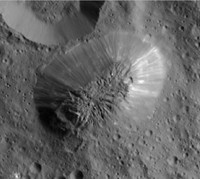Advertisement
Grab your lab coat. Let's get started
Welcome!
Welcome!
Create an account below to get 6 C&EN articles per month, receive newsletters and more - all free.
It seems this is your first time logging in online. Please enter the following information to continue.
As an ACS member you automatically get access to this site. All we need is few more details to create your reading experience.
Not you? Sign in with a different account.
Not you? Sign in with a different account.
ERROR 1
ERROR 1
ERROR 2
ERROR 2
ERROR 2
ERROR 2
ERROR 2
Password and Confirm password must match.
If you have an ACS member number, please enter it here so we can link this account to your membership. (optional)
ERROR 2
ACS values your privacy. By submitting your information, you are gaining access to C&EN and subscribing to our weekly newsletter. We use the information you provide to make your reading experience better, and we will never sell your data to third party members.
Physical Chemistry
Glassy Deposits Detected On Mars
Solar System Science: Fused material formed during ancient meteorite impacts could contain evidence of life
by Elizabeth K. Wilson
June 15, 2015
| A version of this story appeared in
Volume 93, Issue 24
Scientists have detected glassy soil deposits on Mars that likely formed during ancient meteorite impacts (Geology 2015, DOI: 10.1130/g36953.1). Organic molecules and other biologically produced substances have been found suspended in similar glass deposits on Earth, suggesting that the discovery provides a new target for investigating possible past life on Mars. Kevin M. Cannon and John F. Mustard of Brown University found evidence for the martian glass in visible-infrared spectra taken by a spectrometer on NASA’s Mars Reconnaissance Orbiter. Because spectra from glasses are weak, definitive identification would typically be difficult. But the researchers produced glasses in the lab under simulated martian conditions and were able to use spectra from those samples to provide a reference for the observed glass spectra. The spacecraft detected the glass deposits in jagged peaks of soil in the center of impact craters, suggesting that the glass was generated during the hot explosions of bombarding meteorites. One glass-containing crater, called Hargraves, is near a region rich in crust that formed during Mars’s watery past. Scientists are considering that area as a possible landing site for a future Mars rover mission.





Join the conversation
Contact the reporter
Submit a Letter to the Editor for publication
Engage with us on Twitter